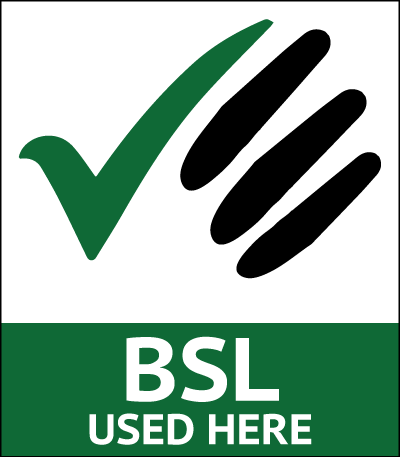Safe and Well Checks
PURPOSE OF REPORT
The purpose of this report is to advise Members of the impact that recent COVID 19 restrictions have had on the number of Safe and Well Checks (SAWCs) carried out by the Service this year, and the possible effect on the Authority’s annual target for delivering SAWCs.
EXECUTIVE SUMMARY
COVID-19 restrictions have meant that North Wales Fire and Rescue Service (the Service) has had to amend its delivery model for SAWCs by carrying out the majority via telephone. The reduced number of visits that have been undertaken in person during this time have been limited to the homes of people at particularly high risk from fire. All such visits have been subject to stringent risk assessments in order to safeguard both the householder(s) and the Service’s staff.
Consequently, the end of year projection for the number of SAWCs delivered during this financial year indicates a potential 40% shortfall against the Authority’s annual target of 20,000 checks.
While COVID-19 restrictions remain in place and even when restrictions are lifted it is likely that the Service will need to review and potentially find alternatives to its normal delivery model for SAWCs. The Authority may therefore need to consider amending its annual target for delivering these checks in future years.
RECOMMENDATIONS
Members are asked to:
note the possible shortfall in the number of Safe and Well Checks delivered in this financial year against the target of 20,000 that was set before the COVID-19 pandemic; and
note that there is potential, dependent on COVID-19, for the Service to be unable to achieve its annual target of 20,000 SAWCS in 2021/22.
BACKGROUND
Members will be aware that following the Chief Fire Officer's Task Group Report in 2007 (reviewed 2009), North Wales Fire and Rescue Authority adopted an annual target of delivering 30,000 Home Fire Safety Checks (HFSC). On the basis that there were around 300,000 dwellings in North Wales, the strategy was based on the potential to visit every home within a ten year period.
A reduction in the capital funding from the Welsh Government in 2015 for single point smoke detectors meant reducing the annual target from 30,000 to 20,000.
Since that time the capital funding has remained the same but the unit cost of detectors has increased, so reducing the number that can be purchased.
INFORMATION
With the announcement of the first COVID-19 lockdown in Wales in late March 2020 the Service stopped carrying out face to face SAWCs to comply with the lockdown restrictions and to protect both the community and staff who would otherwise carry out SAWCs.
As an alternative to visiting homes in person the Service began to carry out more SAWCs by telephone. If it was identified that smoke detectors were required arrangements were made to leave these at the property. Some of the staff who would normally carry out SAWCs in person have been deployed to other duties including supporting the multi-agency response to COVID 19.
In August 2020, with strict risk assessments in place, the Service reviewed its decision and re-commenced face to face delivery of SAWCs to individuals who had been assessed as being particularly vulnerable and at a high risk from fire.
Between 1 April 2020 and 31 January 2021 the Service carried out a total of 9,919 SAWCs. Of those, 2,229 were carried out in person at the property, and the remaining 7,690 by telephone. Of those conducted by telephone, 2,512 required the delivery of a smoke detector to the property. This year to date, over 33% of the SAWCs completed have been undertaken in response to a referral from a partner agency.
It is estimated that the total SAWC figure for 2020/21 will be in the region of 12,000 with approximately 9,000 of these being phone based. This does not meet the target of 20,000 SAWCs that was previously set by the Authority, but as the pandemic continues it is considered appropriate to continue with the current method of delivery.
In the event that restrictions are lifted later in 2021 the Service will consider returning to delivering all SAWCs face to face whilst taking into account the learning developed during the period of the restrictions. The benefit of delivering SAWCs by telephone to those householders assessed as being at ‘low risk’ has been recognised and may well form part of the SAWC delivery strategy in future years. It is however, unlikely that restrictions will be fully lifted from April 2021 so the Service will keep delivery methods under review during 2021/22 with the aim of limiting ‘face to face’ delivery to those households assessed as being at highest risk from fire.
Despite the reduced number of SAWCs delivered in 2020/21 and the revised delivery model, the Service’s focus continues to be on providing SAWCs to those people at highest risk of dying in an accidental dwelling fire. We will continue to work with partners to identify the most vulnerable in our communities and provide appropriate SAWCs to those households.
IMPLICATIONS
Well-being Objectives
There will be an anticipated shortfall in SAWCs delivered against the target this year. The longer term objective of working towards making improvements to the health, safety and well-being of people in North Wales remains.
Budget
Potential for the grant funding to be reduced in coming years.
Legal
None identified.
Staffing
None identified. Some staff normally delivering SAWCs in person have been deployed to other duties temporarily.
Equalities/Human Rights/Welsh Language
The focus remains on delivering to those at highest risk from fire, which includes within the assessment consideration of personal characteristics such as age and disability. SAWCs continue to be available through the medium of English or Welsh.
Risks
Potential community risks of increased fires and fire casualties addressed by continuing to deliver SAWCs in a more targeted way.

